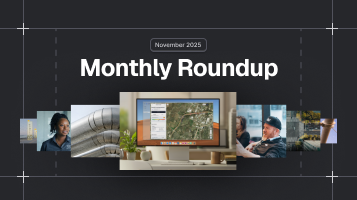Soil erosion
Written by

Published on
March 10, 2021


Table of contents
‘West to East’ is one of the most important natural gas pipelines in China and is one of the largest linear engineering projects in the world. It is a pipeline running for over 2330 km, crossing from Xinjiang in the west to Shanghai in the east.
The pipeline was activated in 2003. Since then, it has unfortunately been the cause of a harmful environmental hazard otherwise known as -soil erosion, in multiple sections of the pipeline.
When a route is trenched with the purpose of utility burying, it is afterwards covered with different soil, or with the same soil that was dug in the process. After this happens, the soil becomes unstable, meaning that wind, rain, and other natural events, can cause displacement of the upper layer of soil – this is soil erosion.
Specifically, along the ‘West to East’ line there are different types of soils, some of which are ecologically fragile. Man-caused disturbances in these delicate areas can easily cause unrecoverable impact, for example:
1. Reducing the ability of the soil to store water and nutrients, harming the native plants and animals.
2. Exposing the subsoil, which often has poor physical and chemical properties.
3. Having higher rates of run off, shedding water and nutrients otherwise used for crop growth.
Unfortunately, this pipeline is just one example out of countless SUE projects that often involve unnecessary excavations.
Due to the complexity of finding the optimal utility route, many unnecessary excavations occur, leading to a higher risk of causing such environmental harm. Therefor, SUE (Subsurface Utility Engineering) project managers have a huge responsibility in minimizing the number of unnecessary excavations – not a simple task.
The reality is that the subsurface is filling up; power lines, gas and oil pipelines, sewage channels, optical fibers, and these are just the tip of the iceberg - the more buried utilities out there, the higher the chance of a utility strike. In this context, every time such an event occurs, it is almost certain that unnecessary digging will take place.
In the best case scenario the utility route is moved a few meters to the side, and worst-case scenario the route is re planned with additional trenching of countless of kilometers.
As the world grows more and more environmentally aware, this is becoming an unacceptable reality.
Prevention can be achieved by using accurate and up-to-date subsurface utility mappings, that can optimize the route planning.
The 4M platform is able to provide such information, and more so. It is able to suggest the optimal utility route, helping project managers prevent any unnecessary digging.
In other words, 4M’s solution is the ultimate challenger to take on the hazard of soil erosion, and it makes us proud as a company that we are able to contribute to mankind’s environmental efforts.
Recent blog posts

Our Newsletter
Join 7k infrastructure professionals
Get monthly insights on ways to build smarter, faster and safer with Utility AI.

.avif)




